No Results Found
The page you requested could not be found. Try refining your search, or use the navigation above to locate the post.
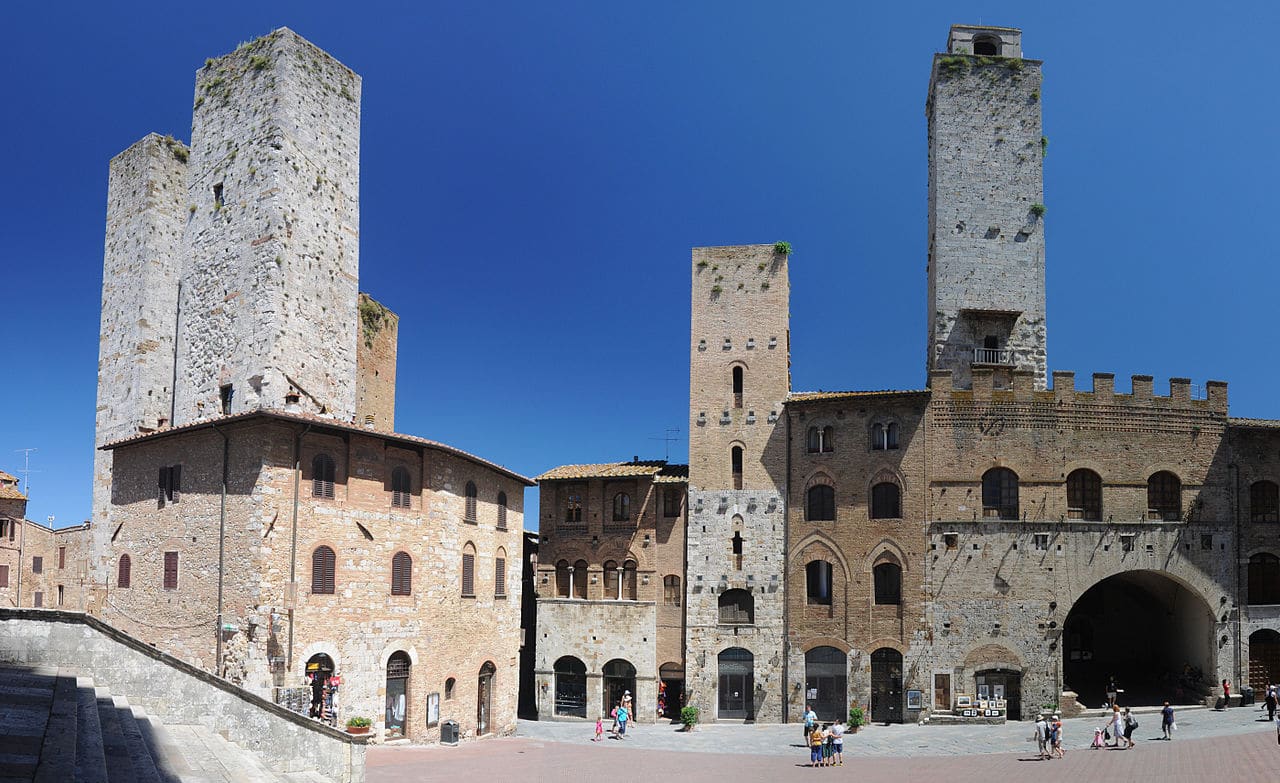
A forest of towers on the horizon
For the characteristic medieval architecture of its historic centre, San Gimignano was declared a UNESCO World Heritage Site in 1990. The site of San Gimignano, also known as the Manhattan of the Middle Ages, is largely intact in its 13th and 14th century appearance and is one of the best examples in Europe of urban organisation from the communal era. In the most prosperous period, the rich families of San Gimignano came to build as many as 72 towers as a symbol of their wealth and power. Of these, 14 remain today, adding to the charm of the town’s atmosphere.
Cathedral of San Gimignano: the simplicity of its Romanesque façade encloses the wonders and masterpieces inside. These include works by Benozzo Gozzoli, Taddeo di Bartolo and the pupils of Simone Martini.
Piazza del Duomo: if the Duomo is the religious symbol of San Gimignano, the Palazzo del Popolo is its civic counterpart. Together, just a few metres from each other, they form the extraordinary architectural ensemble of Piazza del Duomo. The Palazzo Comunale is located on the left-hand side of the square, between the Torre Grossa and the Loggia del Comune. The palace today hosts the Civic Museum of San Gimignano, which already announces its beauty from the entrance courtyard.
Piazza della Cisterna: this square, with its extraordinary setting, is an almost obligatory point of passage for any visit to San Gimignano. It is located at the top of the hill on which the Tuscan town is built, so it is a good place to relax. Harmonious and collected, it is certainly the most beautiful piazza in San Gimignano and one of the most beautiful all over Tuscany. This is where the small shops and market and jousting took place.
The Torture Museum: In reality, there are two small museums: the first, as soon as you enter the village, displays on three floors a complete itinerary on torture methods from all over the world, with original instruments and tools, photos and detailed explanations. The other museum is located a little higher up and has the death penalty as its theme.
Church of Sant’Agostino: a small treasure trove of works of art that is well worth a visit to discover the many jewels it contains.
Rocca di Montestaffoli: built to defend San Gimignano from attacks by Siena after its submission to Florence. Not much remains of the ancient fortress, but it is worth climbing into this green space to admire an extraordinary view of San Gimignano and the Val d’Elsa. The only remaining tower of a complex defence system is a privileged vantage point from which to enjoy the view. Today, the fortress of Montestaffoli is the site of cultural events and festivals, in particular the Giostra dei Bastoni, held in June.
The page you requested could not be found. Try refining your search, or use the navigation above to locate the post.
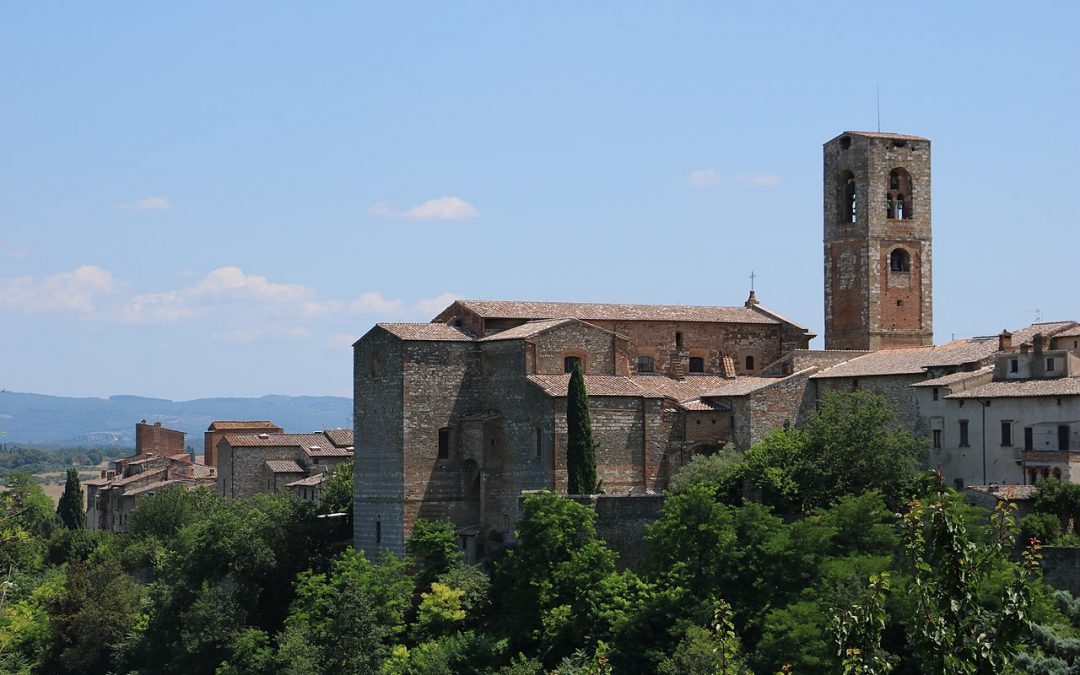
The crystal capital
Colle, also known as the Bohemia of Italy, accounts for 95% of Italian crystal production and 14% of world production. It therefore represents excellence in this sector for our territory and for the world.
Globets, plates and glasses are shaped through a mix of craftsmanship and technique that can still be observed today and that allows the city to be the producer of almost all of this special glass in Italy. To learn the tricks of the trade and contemplate the art of glassblowing, you can visit the Crystal Museum or take the opportunity to attend demonstrations held in the workshops.
In the past, the medieval village of Colle was divided into three parts: Borgo di Santa Caterina, Castello di Piticciano and the Piano, now simplified into Colle Alta and Colle Bassa. Official documents begin to mention Colle val d’Elsa as early as the 10th century. The town consists of the historic centre on the hill above and the newer part below.
Colle Bassa: a visit to Colle can start from the large Piazza Arnolfo di Cambio located here. Then there is the Crystal Museum and the Church of St. Augustine. From Piazza Arnolfo di Cambio, take Via dei Fossi until you reach the Crystal Museum. The museum reconstructs the history of Colle’s glass industry. The museum also has an experimental area where visitors can come into direct contact with materials and tools for glassmaking. Continuing along Via dei Fossi, we come to Piazza Sant’Agostino, which is overlooked by the Renaissance-style Church of Sant’Agostino.
Colle Alta: the Castle and the Borgo make up the most interesting part of the village. Here we find the Cathedral, the Archaeological Museum and the Museum Complex of San Pietro. Continue on to the majestic Porta Nova. The gate is part of the imposing system of fortifications that served to defend Colle Castle.
Everyone knows the novel The Adventures of Pinocchio written by Carlo Collodi, but not everyone knows that for a certain period of his life the writer lived in Colle di Val d’Elsa. There was a medieval fountain in the town called Fonte di Pinocchio, which must have inspired Collodi to choose this name for his puppet.
The page you requested could not be found. Try refining your search, or use the navigation above to locate the post.
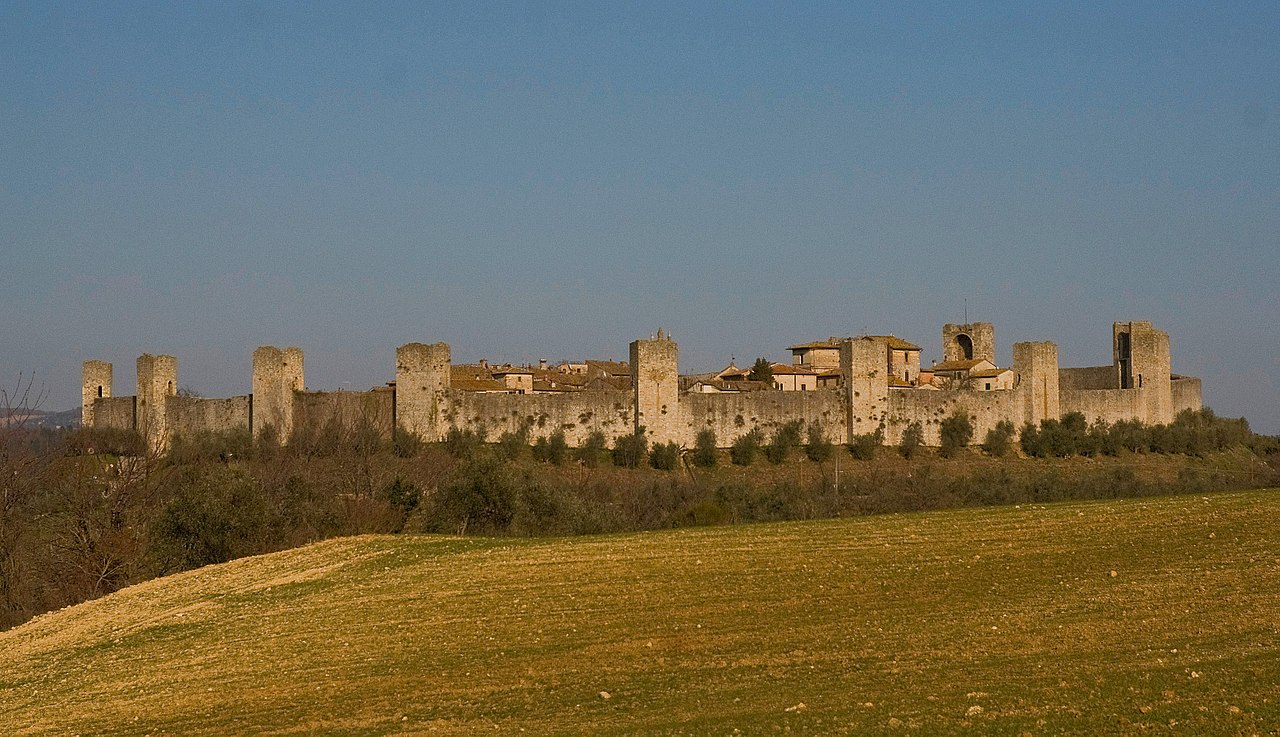
A timeless place
Monteriggioni represents one of the most significant fortified villages in the area and is one of the best preserved examples of military architecture in the world. Its strategic position allowed first to control and then to admire Colle Val d’Elsa and Staggia.
The perfect circularity of its perimeter was achieved by following the natural contours of the land. The walls of Monteriggioni have a perimeter of 570 metres and were built between 1212 and 1219, only to be reinforced in 1260-70.
The untouched city walls consist of 14 towers and 2 city doors. The Porta Franca or Romea facing Rome and the Porta Fiorentina facing Florence. All this demonstrates its majesty, which still shocks today.
Piazza Roma, the heart of the village, is surrounded by meadows and vegetable gardens, once useful for the survival of the population in case of siege. This is the main square of the village, overlooked by the Pieve di Santa Maria Assunta. A small church, it has always been the centre of village life.
The prestige and peculiarity of this village have long enjoyed a consolidated reputation; even the poet Dante Alighieri mentions Monteriggioni in his Divine Comedy because he was personally impressed by this imposing structure.
There are legends that tell of secret passages and underground passages connecting the castle with the nearby fortifications, and even a road to Siena.
In the last few years Monteriggioni has taken on greater tourist importance, having been included in the Via Francigena route by the Council of Europe, and is therefore part of the Cultural Itineraries. This is a walking route that starts from Piazza Roma in Monteriggioni and arrives at Il Campo in Siena.
The page you requested could not be found. Try refining your search, or use the navigation above to locate the post.
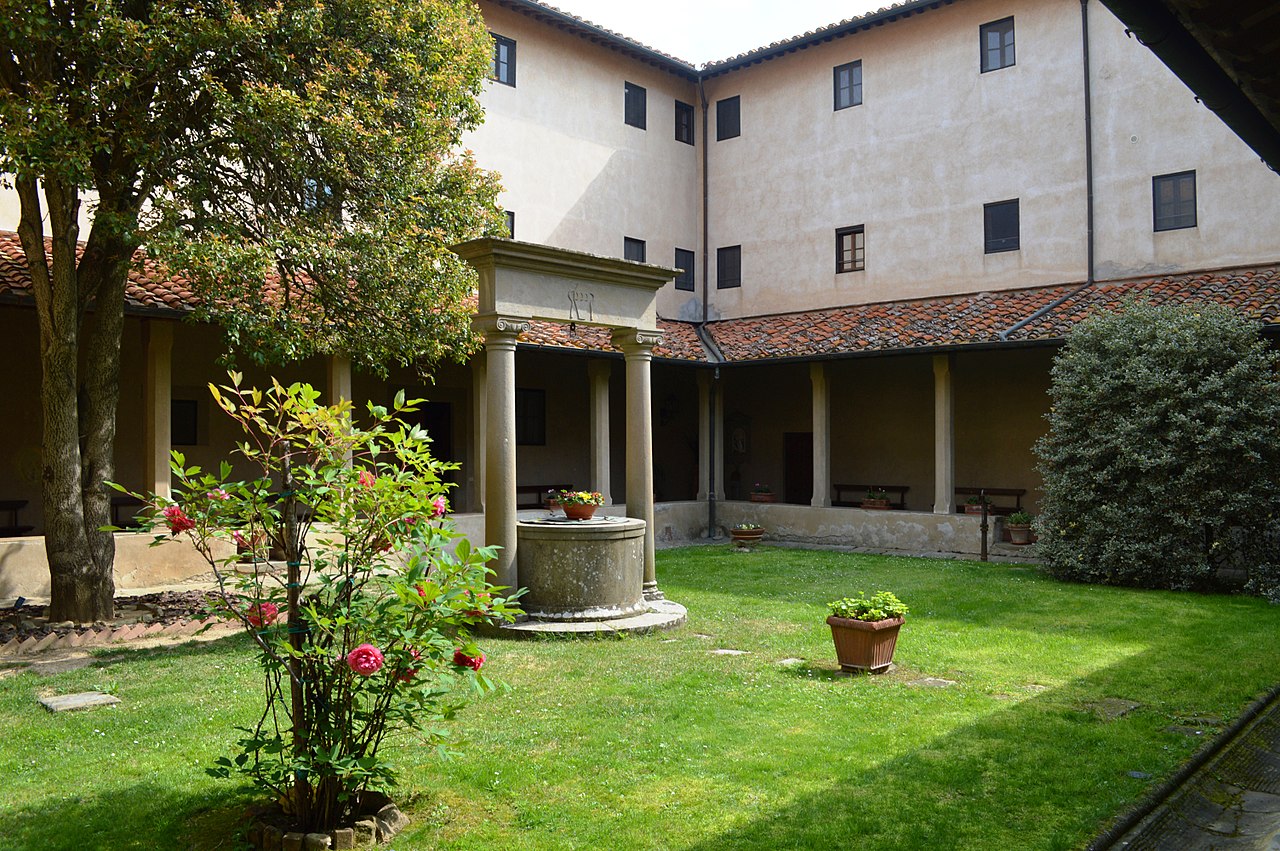
Area of multiple monastic experiences, of a life devoted to prayer and meditation
The Lecceto Hermitage is the most famous of the Augustinian hermitages and is located about eight km west of Porta San Marco in Siena. The hermitage-fortress, with a beautiful stone tower, is located in a very picturesque position on the edge of beautiful holm oak woods in an area called Grillanda, about 300 metres above sea level. Being only a mile away from San Leonardo al Lago, many historians have confused them over time.
The Lecceto Hermitage has a beautiful tower and, in addition to a distinctive portico and a remarkable bell tower, includes two cloisters: one from the 13th and one from the 15th century.. What is surprising, however, is the fact that such a famous hermitage has neither an official founder nor an official year of birth.
The hermitage community was the first to follow the new rule of St Augustine thanks to the approval of Prior Bartolomeo da Venezia. The monastery was always inhabited by Augustinian fathers from the first half of the 1200s until the end of the 1800s, the time of the Napoleonic suppression. In 1972, a female community of Augustinian nuns moved there after leaving the city of Siena. Their lives were completely woven with prayer, a prayer of meekness and compassion for man.
Gaiole in Chianti A market town for castles and surrounding areasGaiole in Chianti in the past was a city busy with local traffic, but after the end of the conflicts between Florence and Siena, it turned more towards agriculture, strengthening its position as a market...
Vertine Fortified oasis in the Chianti mountains Vertine is one of the best preserved examples of military architecture in Chianti and more precisely in the municipality of Gaiole. The excellent condition in which it is located today, especially the castle with its...
Barbischio More than an ancient Florentine defenseThe Castle of Barbischio dominates the village of Gaiole In Chianti. In 1200, together with the nearby Montegrossi, Vertine and Meleto, Barbischio was part of the Florentine defences of this area of Chianti, bordering...
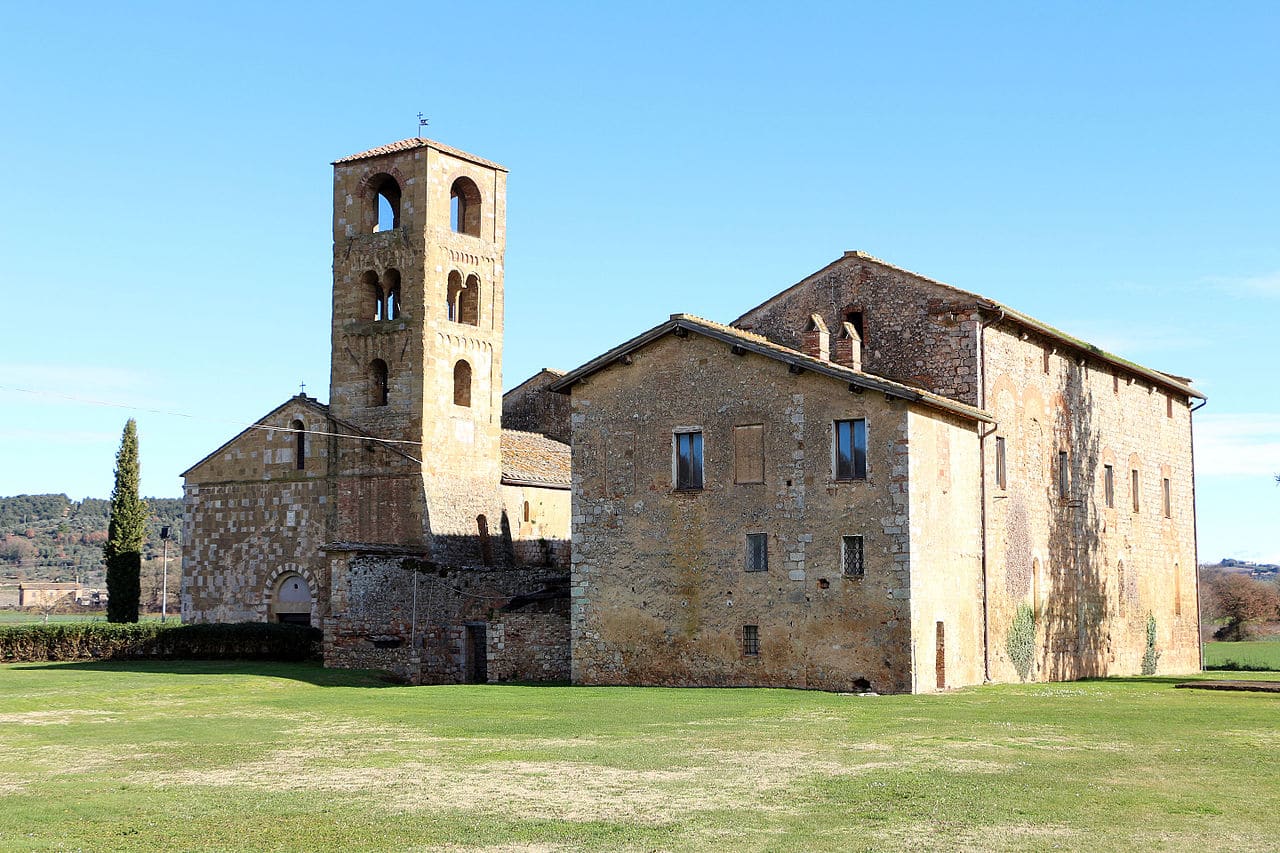
One of the most interesting Romanesque monuments in the Sienese countryside
Historical information on the parish church is fragmentary, but the existing documents and its architectural structure facilitate a partial reconstruction of its history by scholars. The church is mentioned as early as 1050, but the building that has come down to us was built in the following century by the Vallombrosian monks of Torri.
This building was the summer residence of the Bishop of Siena, while the cloister attests to the presence of a community of presbyters, i.e. unmarried young men initiated into clerical life through cohabitation. From the archers, arquebuses and loopholes we can deduce that the complex was fortified.
The most important element of the parish is the bell tower, but its entrance is also very special because here instead of going up, you go down steps. This was done so that the church looks more slender from the inside than one imagines from the outside. The style is inspired by late French Romanesque and is therefore very close to Gothic.
The place cannot leave us indifferent, because the spirit within the ancient walls of warm colours and harmonious architecture is gentle, inspiring peace and serenity and enchanting with symbols whose meaning has been lost.
The page you requested could not be found. Try refining your search, or use the navigation above to locate the post.